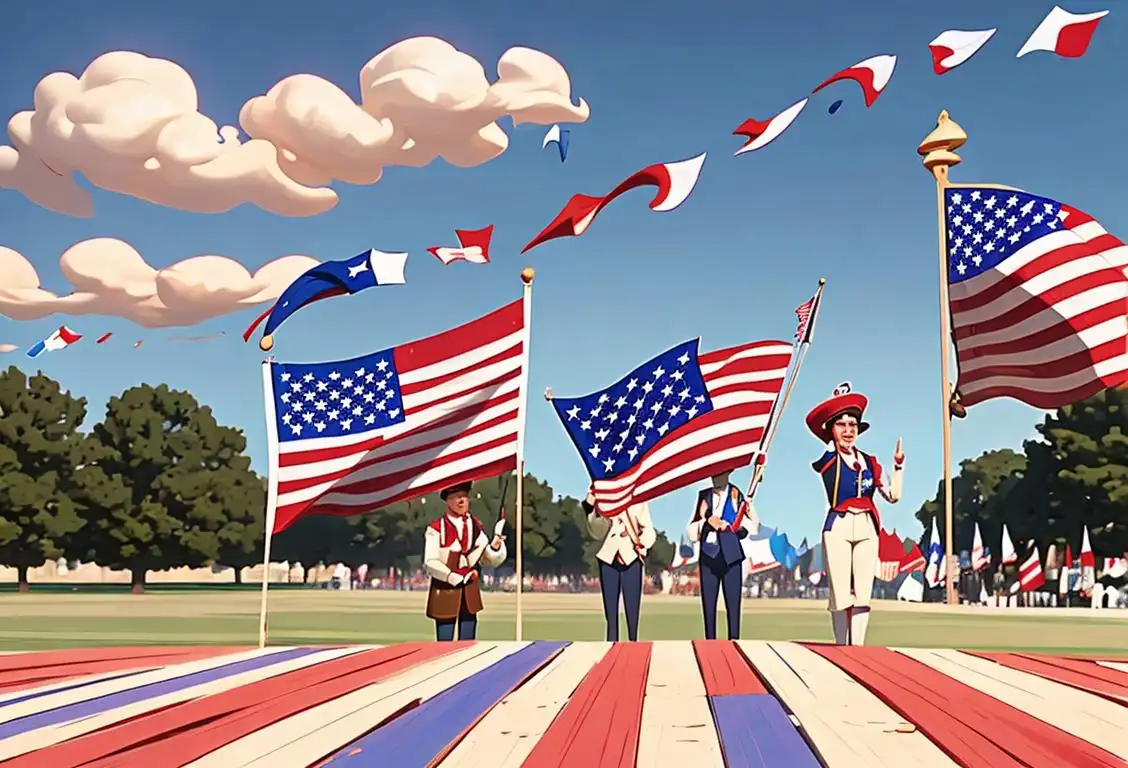National Mail Order Catalog Day

Did you know that today is National Mail Order Catalog Day? It's a day to celebrate the convenience of shopping from the comfort of your home, with a cup of tea in one hand and a catalog in the other. So, get ready to flip through pages filled with dreams and wonders as we dive into the fascinating history of mail order catalogs!
When is Mail Order Catalog Day?
It's national mail order catalog day on the 18th August.
The Birth of the Mail Order Catalog
Long before the internet took over our lives, mail order catalogs ruled the shopping world. They were like magical portals that transported us to a world of possibilities, where we could order anything from clothes to toys with just a phone call or a stamped envelope.
The concept of mail order catalogs dates back to the late 19th century when a visionary named Aaron Montgomery Ward revolutionized the way people shopped. In 1872, Ward introduced the first mail order catalog in the United States, offering an extensive range of products at affordable prices. This innovation allowed people from rural areas to access goods that were previously unavailable to them.
As the popularity of mail order catalogs grew, other retailers jumped on the bandwagon. Sears, Roebuck and Co., founded by Richard Sears and Alvah Roebuck, became one of the most prominent players in the industry. Their catalog, known as the Sears Catalog, featured everything from clothing and appliances to housewares and even entire kit houses!
The Rise of the Internet: The Catalog Goes Digital
With the advent of the internet in the 1990s, mail order catalogs faced a new competitor. Online shopping became the latest trend, offering a faster and more convenient way to shop. As a result, many companies shifted their focus from printing catalogs to creating online platforms.
However, the nostalgia for flipping through a physical catalog and the joy of receiving one in the mail remained strong. Some companies continued to produce mail order catalogs, catering to those who cherished the old-school shopping experience. Today, mail order catalogs have become collectors' items, treasured for their historical significance and their ability to transport us back to simpler times.
Celebrating National Mail Order Catalog Day
On National Mail Order Catalog Day, take a moment to appreciate the legacy of mail order catalogs and the impact they had on the retail industry. Whether you browse through the pages of a vintage catalog or reminisce about the excitement of waiting for a delivery, let's celebrate the convenience and innovation that mail order catalogs brought into our lives.
History behind the term 'Mail Order Catalog'
1744
Early Beginnings
The term 'mail order catalog' finds its origins in the year 1744, when Benjamin Franklin, a printer in Philadelphia, published the first mail order catalog in the American colonies. This catalog, titled 'General Magazine and Historical Chronicle,' included various books that readers could order by mail, making it one of the earliest examples of distance shopping.
1872
Ward's Illustrated Catalog
The mail order catalog saw significant development in 1872 when Aaron Montgomery Ward, a traveling salesman, published the first edition of his famous 'Ward's Illustrated Catalog.' This catalog was distributed through mail and showcased a wide range of products, including clothing, household items, and tools. The success of Ward's catalog paved the way for future entrepreneurs to embrace the mail order business model.
1888
Mass Production and Distribution
In 1888, Richard Warren Sears and Alvah Curtis Roebuck founded the Sears, Roebuck and Company. They revolutionized the mail order catalog industry by introducing mass production and distribution methods. Sears catalogs became incredibly popular, as they offered an extensive selection of products at affordable prices. This innovation allowed customers from rural areas to access a wide variety of goods previously unavailable to them.
1908
Reaching Widespread Audience
By the early 20th century, mail order catalogs had become a staple in American households. Companies like Montgomery Ward and Sears reached a widespread audience, offering diverse products to urban and rural customers alike. These catalogs also played a significant role in promoting consumer culture and shaping consumer aspirations by showcasing the latest trends and technological advancements.
1990s
Decline and Transition to Digital
With the rise of the internet and e-commerce in the 1990s, traditional mail order catalogs faced a decline. Many companies shifted their focus to online platforms, offering customers the convenience of browsing and ordering products digitally. While the popularity of physical mail order catalogs has diminished, their legacy lives on, shaping the way we shop and influencing the development of modern retail.
Did you know?
Did you know that the first mail order catalog in the United States had only a single sheet of paper? It consisted of a list of items and prices, paving the way for the shopping revolution we know today!Tagged
history nostalgia shopping retail convenienceFirst identified
18th August 2015Most mentioned on
18th August 2016Total mentions
143Other days
Mail Order Catalog Day
Baseball Card Day
Splurge Day
Sogo Day
Parents Day
Convention Day
Memorial Day
Teacher Appreciation Day
Flag Day
Former Prisoner Of War Recognition Day








